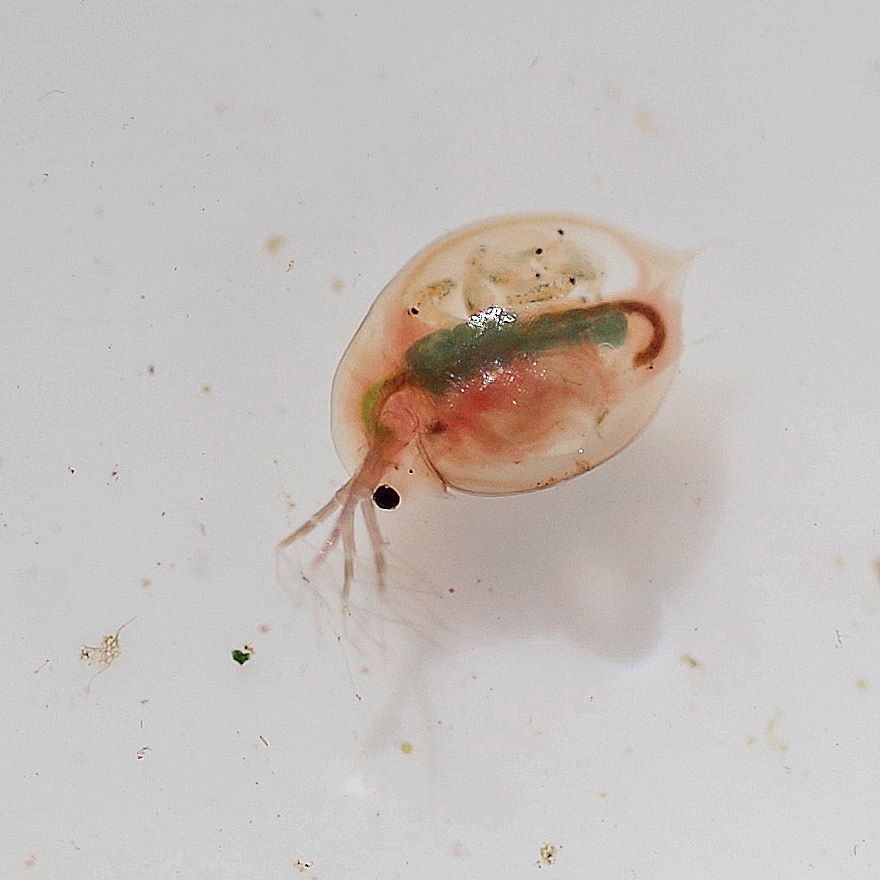
by Kate Redmond
Wetland Homage III Water Fleas
Howdy, BugFans,
We’re celebrating American Wetlands Month with up close and personal views into the lives of some of its citizens, as seen in some slightly refurbished, vintage BOTWs.
Wisconsin has about five million acres of wetlands these days, down from an estimated 10 million acres 150 years ago. Early explorers referred to this territory as the Great Swamp, but today, only about 15% of the state is covered by wetlands. Wetlands were considered waste areas that needed to be turned into something “more productive,” and they were drained and filled and altered, and many were used for dumps.
DAPHNIA(2012)
Back into the water we go and into the realm of another NETI – not the pot, the “Not-Exactly-True-Insects.” Daphnia are at the lower limit of what the BugLady can accomplish with her 50mm macro lens (though she does have a recognizable shot of a Cyclops……), and Daphnia, aka water fleas, are yet another example of great stories coming in small packages.
How small? Pretty much at the edge of what the naked eye can easily detect/identify. One source describes them as the size of the “equals” sign on the keyboard. They’re listed as less than 5mm.
The short version – daphnia are oval-ish, shape-shifting, widely-distributed, exhaustively-studied (right down to the pH of their teeny-tiny digestive tracts), unbelievably fecund, highly variable, planktonic, freshwater crustaceans. That sentence bears a little “unpacking.”
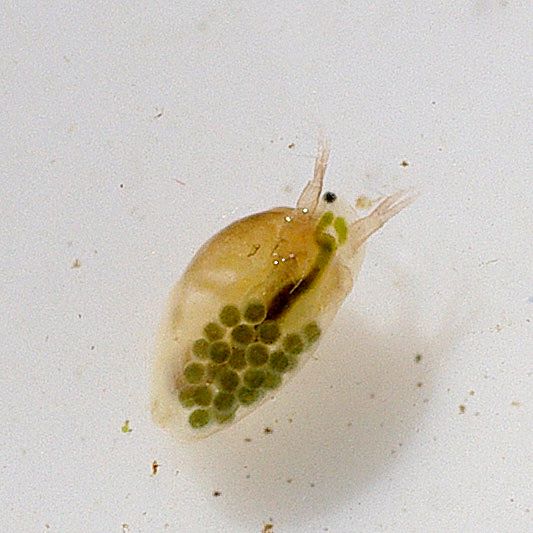
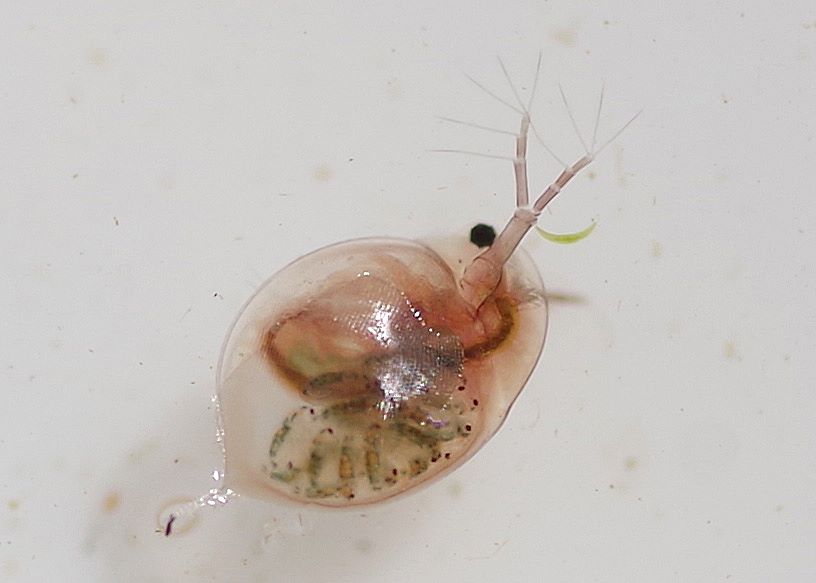
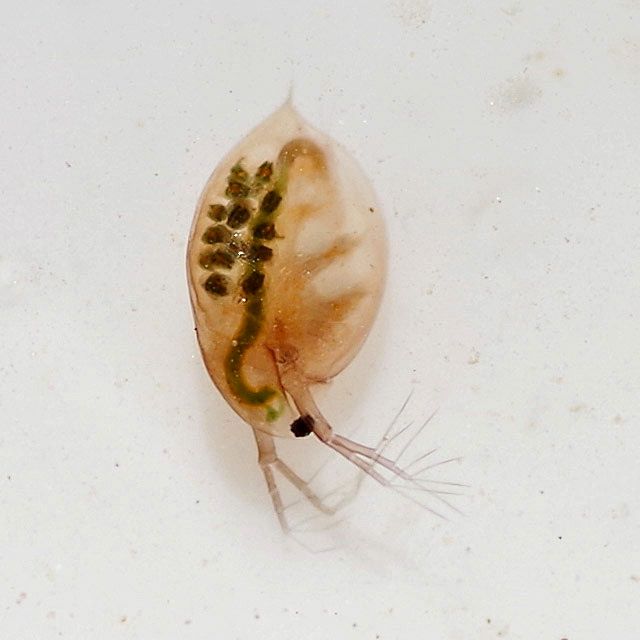
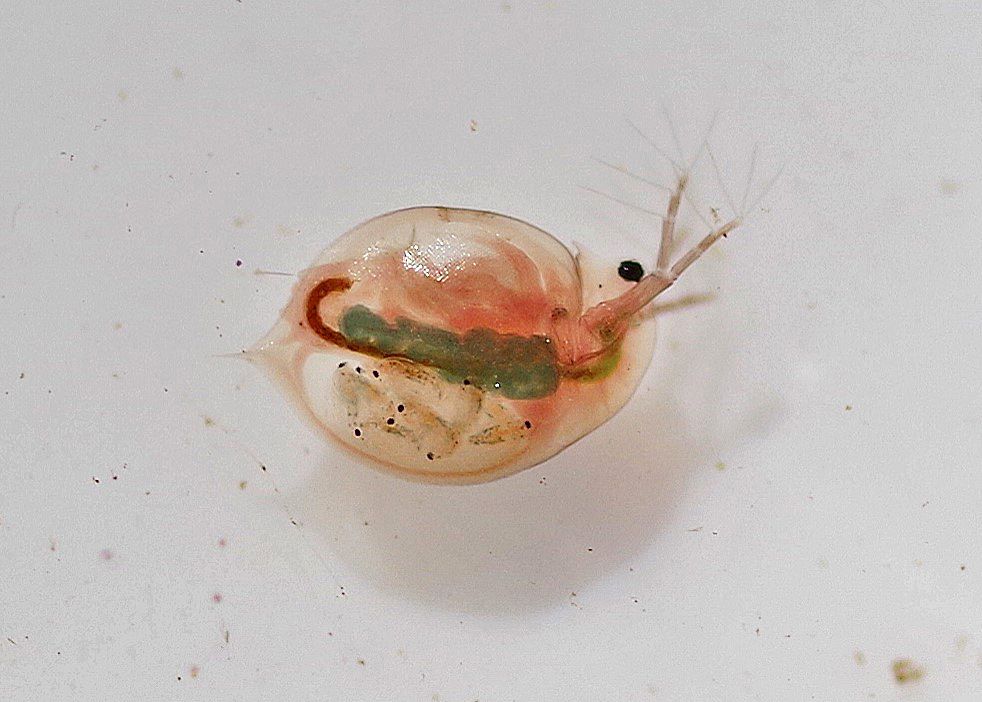
Who are they, scientifically speaking? Daphnia are in the Phylum Arthropoda, subphylum Crustacea (like the water sow bug of recent BOTW fame), class Branchiopoda (with fairy shrimp and a few others), order Cladocera, and the family Daphniidae. For our purposes one of the more common daphnia, Daphnia pulex, will serve as Everydaphnia. According to Ann Haven Morgan, in her lovely Field Book of Ponds and Streams, “In 1669 the Dutch naturalist Jan Swammerdam described the common water flea as Pulex aquaticus arborescens – ‘the water flea with the branching arms’ – and ‘water flea’ it has remained ever since.” It was officially described and welcomed into the Linnaean system in 1785.
You can see what? A translucent carapace/shell of its own creation wraps around the daphnia’s thorax and abdomen. The carapace looks like a tiny bivalve/clam-type shell, but it is actually a single, “folded” piece that doesn’t quite meet on the ventral (belly) side, forming two “valves” but with no hinge. Neither the segments nor the first pair of antennae can be seen easily, and the legs are found in the gap between the edges.
Based on an exhaustive study of daphnia anatomy, the BugLady figures that the dark ovals that can be seen on the dorsal side in some of her Daphnia pictures are young in the brood chamber. The front blob on the adult’s head is the eye, and the second blob in the head seems to be part of the intestinal tract. Unlike (almost all) insects, which do not molt after achieving maturity, daphnia molt about 25 times in their lives, and when they are in reproductive mode, they release a brood each time they molt.
How do they navigate their world? Daphnia are found in all sorts of aquatic habitats, including ephemeral ponds but not including fast-moving or polluted waters. Its large, compound eye rotates constantly, sensing changes in light intensity – daphnia don’t like light much, and many species move up and down in the water column from a pond’s surface to its floor several times during a 24 hour period. The mouth, the small, first antennae, and the setae (hairs) on the ventral edge of the shell pick up “smells.” These hairs on the ventral edge of the shell and the sensory hairs on the antennae are their touch “organs.” They breathe through their body surface. “Rowing” movements of the larger pair of antennae also provide the jerking locomotion that earned them the water flea moniker.
Most individuals live only a short time, but some may live about a year, eating organic detritus, bacteria, algae, and some micro-zooplankton and dodging their many predators. A current set up by their legs delivers food into the mouth.
Sex – or not: As soon as the water starts to warm, offspring are produced solo, by Mom (a talent called parthenogenesis). She’s pretty good at it, too, popping out as many as 40 at a time, all female. According to Morgan, “one Daphnia pulex produces a brood of eggs every two or three days [other sources said 10 days] and with its descendants it is said to produce 13,000,000,000 in 60 days.” It only takes the young a few molts to achieve reproductive adulthood, and when they do, they already have eggs in their brood chamber. Daphnia eggs hatch in the brood chamber, and the young stay there for a few days; they are released when Mom molts, at which time she reloads the brood chamber.
While she is cranking out more and more offspring, the water temperature is changing (warming in summer or cooling in fall), the water is getting more crowded, food is declining, and the concentration of waste products is rising. These stressors cause her to produce some male offspring (up to 50%), and orgies ensue. The eggs produced by these sexual unions (which introduce some genetic variation) are called winter eggs. Extra layers are added to the walls of the brood chamber for the winter eggs. The whole “egg container” is called an ephippium, and the egg-filled ephippium is released as a unit that can survive winter cold and drought. If the drought is temporary and the pool refills in fall, the eggs in the ephippium hatch (most of them are female) and the cycle is repeated.
Shape-shifting? The warming waters of summer may (or may not) cause individuals to change the shape of their head/helmet from rounded through pointy to absurdly pointy. Predatory pressures may result in smaller, more transparent individuals that may grow neck spines (yes, the BugLady is a sucker for cool graphics – https://www.nd.edu/stories/little-giants/). Here’s more https://northernwoodlands.org/outside_story/article/daphnias-changing-shape-stirs-a-debate.
Who cares?? Well, fish care – a lot. Daphnia are bread and rice to many young fish, comprising up to 90% of their early diet! Carnivorous bladderwort plants care, too; Morgan says that one bladder can hold up to three daphnia. Aquatic insects also appreciate them, and wading birds. Aquarists (not Aquarius’s) care – daphnia provide food for aquarium animals.
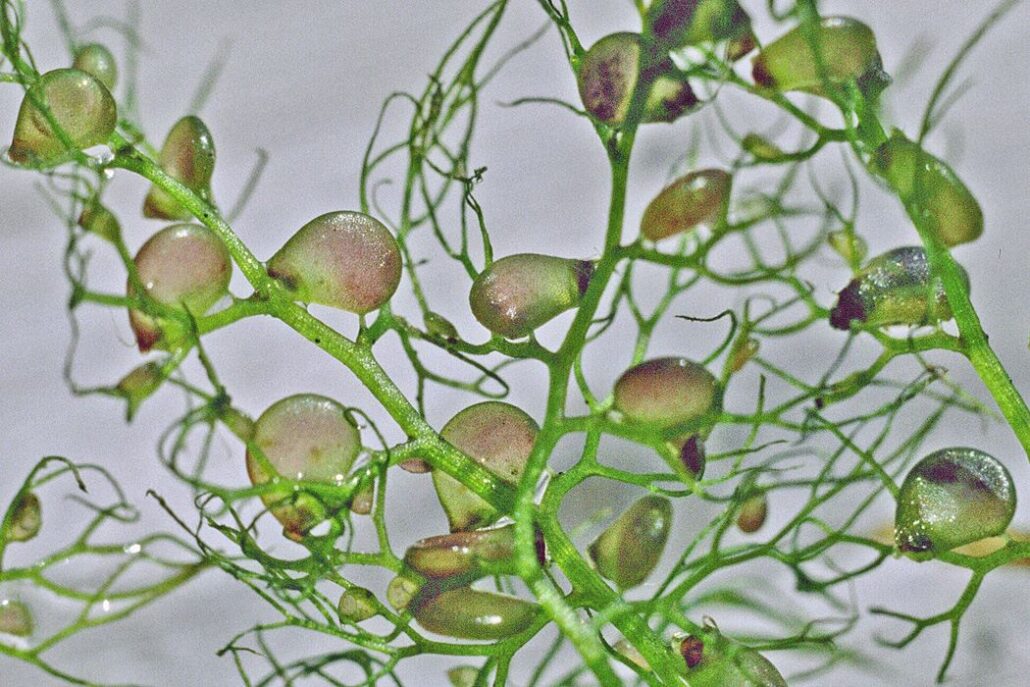
Scientists care. The translucency of their carapace allows scientists to watch a daphnia’s innards at work. Daphnia are almost universally available, are easy to rear in the lab/school, and look cute under (and can survive under) the cover slip of a slide. You can subject them to alcohol, nicotine, prescription drugs, etc. and watch their reactions, study immunity, disease, cellular function, and more.
Scientists are so enthralled with daphnia that they have worked out the genomic sequence (which wades deeper into scientific waters than the BugLady is comfortable going). Suffice it to say that humans have 20,000 to 25,000 genes and daphnia have 31,907, more than one-third of which are unique to daphnia, and many of which are duplicates! One of the legacies of the late, great entomologist Dr. Tom Eisner is the mantra that knowing the natural history of an organism can help us hypothesize what is/isn’t/should be happening internally. Daphnia are short-lived critters that survive in constantly-changing conditions, and scientists think that the environment may help determine which of the duplicate genes will be expressed.
The rest of us care, too. In his Freshwater Invertebrates of the United States, Pennak says that “the water fleas have been favorite objects of observation by both amateur and professional biologists ever since the invention of the microscope.” The BugLady was charmed to discover that there are daphnia tee-shirts.
And we can barely see them!
Life is Physics. The various creatures of the surface film have developed different ways to navigate the meniscus—Water treaders actually “run” at the meniscus slope and then use their front legs to pull themselves “uphill.” The BugLady recommends this beautifully-photographed article about bugs and https://thales.mit.edu/bush/index.php/2005/04/14/wetting-climbers/ (you don’t have to do the math–the folks at MIT already did it for you).
Bugs in culture: “I was stunned by the perfection of the insects.”—Pablo Neruda
Kate Redmond, The BugLady
Bug of the Week archives:
http://uwm.edu/field-station/category/bug-of-the-week/
